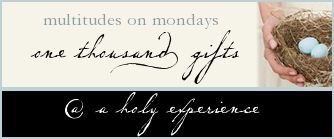I drive a lot for my job, and I’m usually alone in the car. Sometimes I pray, sometimes I just think. My drives can be as long as an hour, so I also like to listen to the radio when I’m between points. Sometimes I listen to music, sometimes I listen to talk radio. Back in May, on my way back to the office, I heard part of Diane Rehm’s interview with Dr. Maya Angelou. Dr. Angelou has a new book out called “Mom & Me & Mom” which continues the collection of her autobiographies.
One thing in particular caught my attention as the two women spoke, it had to do with forgiveness. A caller named Laura had a question for Dr. Angelou that went like this:
LAURA
ANGELOU
LAURA
ANGELOU
Well, one of the things that, Ms. Laura, is I’ve changed that word to make it two words and turn it around to ‘give for’. So if I have someone who has embarrassed me or broken a promise to me or betrayed me or in any way hurt my feelings I will find something, a bag of potatoes, a bag of onions and a roast and give it to a needy family. And I say I’m giving this for Joe who hurt my feelings. And somehow I’m free. I’m not carrying Joe around on my back. I’m not tugging him along everywhere I go. He’s not making me look old and tired and weird. I’m free of him. I have given for him. I don’t know where I got that, but that’s what I do.
(See the full transcript here:
And I just love that! I love that she channels that pain into something good. It’s taking a distortion and making it straight. It reminds me of how I feel about knitting. Knitting, to me, is taking yarn, a ball or skein, of chaos and making sense and order of it. It’s the end of the kick-the-cat syndrome. It says to the offender, “I’m not passing this pain along to someone else and I’m not keeping it inside to fester and wound me further!” It says, “I choose grace!”
Now I also realize that some wounds are so great that we must tend them before we can get to the point of honestly and genuinely being able to turn them into grace that carries forward. A few years ago, when I was feeling deeply wounded, a friend and mentor of mine told me that I wouldn’t be able to move out of the pain until I had something to move to. There was a lot of truth in that. Being in the depth of the place of darkness and pain makes it very hard to see the sunshine, very hard to think of how I can turn the ashes into beauty.
But, as I’ve had time, distance and worked at healing, I can see the blessing of living through the trials. I can also see how I can still use my gifts to be a blessing to others. With that, I can connect with grace, karma, and all those ideas of paying forward the good. I’m in a place now where I don’t feel a need to receive pain and grow it. I’m in a place now where I can also recognize another person’s pain and anguish, understand it and see my part in it. I can sit with someone who is in a place of pain, and do it with empathy. When someone tries to inflict pain on me, I’m better able to recognize if I’m the cause or just a convenient target.









